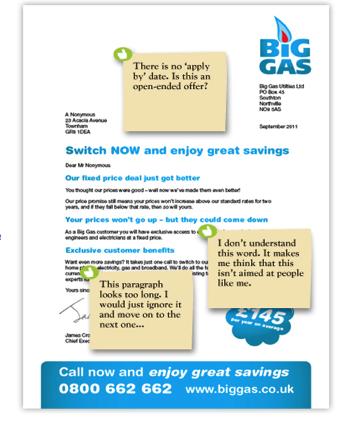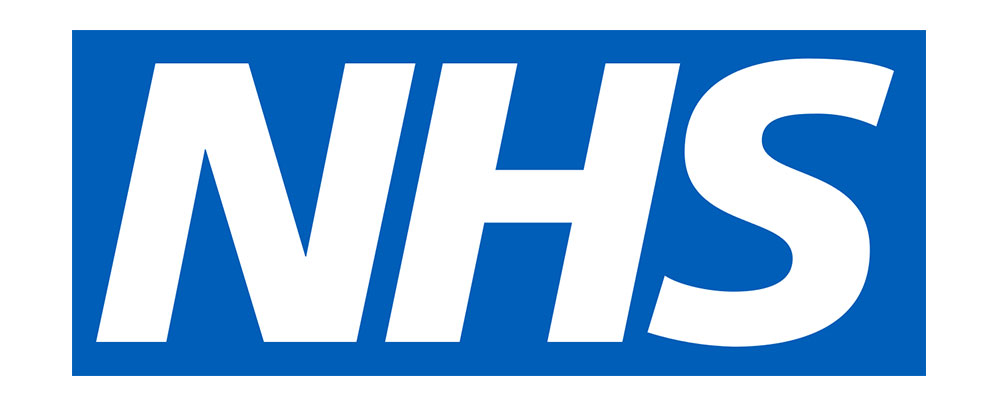Education is when you read the fine print. Experience is what you get if you don’t.
This quote from American folk singer and social activist Pete Seeger is broadly accepted wisdom when it comes to the importance of reading the subject matter thoroughly before signing on the dotted line.
And yet, so many of us don’t do it. In fact, according to our own research, 57% of UK consumers are ‘avoiders’ and actively unwilling to engage with the detail of the financial product they are taking out, whether a mortgage, home insurance or an investment.
Is that because we believe that “nothing in the fine print is ever good news” (Andy Rooney)? Or is there something else going on here in terms of the way we assimilate information.
And how much of the blame can be laid at the door of the documents themselves?
The issue
It’s impossible to navigate life these days without financial commitment – most of us will at some point be faced with online or printed material that ‘explains’ the product we are buying.
We know we should read it – there could be grave consequences if we don’t – and yet all too often we just file this kind of document in the nearest drawer “for later.”
A pertinent example of this data myopia is NameDrop – a fake social network set up as an experiment to see how much consumers really read T&Cs.
Students taking part in the research were asked to activate the “By Clicking Join,” button, agreeing to abide by NameDrop’s terms of service in doing so.
Paragraph 2.3.1 of the terms of service required them to hand over their future first-born child. 534 students took part in the experiment. Only a quarter actually “read” the T&Cs but all 534 still agreed to join, theoretically giving NameDrop ownership over their entire next generation.
A nation of avoiders
With regard to the 57% of UK consumers who are ‘avoiders’, the majority of us are reluctant to become involved in the process of making financial decisions and so focus purely on the core features and benefits of a product – and then only at the highest level.
Of course, these don’t reflect the entirety of the product, but rather act as ‘good news’ soundbites, enabling us to see and hear only what we wish to. As a result, we happily sign on the dotted line.
Problems can then arise when it’s time to make a claim or when there is a problem with the product. It’s at this point that we find out to our dismay that we don’t have the cover that we thought we did.
Of course, it’s often our own fault. So why do we do it?
Barriers to assimilation
According to consumers, the reasons are myriad and include:
- “What’s the point?” 74% of us don’t expect to understand a financial product so don’t bother trying
- “I’m pushed for time.” 43% of us only allow 20 minutes for the assimilation of information in a key document where £1,000’s or even £100’s of thousands may be at stake, whilst another 22% allow half that
- “I focused on the important sections.” 85% read financial communication in a highly selective manner. Hierarchy of information absorption starts with costs and key features. Risks and how the product actually works are much further down the list.
The fault isn’t just with the financial customer
Although consumer attitudes are certainly problematic, what about the influence of the way information is presented?
The Financial Conduct Authority’s (FCA) Treating Customers Fairly (TCF) initiative was set up to look into this. The initiative was designed to establish whether financial providers were treating customers fairly in terms of the way that products were being presented and sold.
This included looking at the architecture of the documentation that consumers were expected to assimilate when buying financial products. The idea being that making customer communications clearer and more understandable would make them fairer for consumers as a result.
Although the FCA never defined the concept of fairness we did our own research on this and found that, in the minds of consumers, fairness was tightly correlated with the notion of trust.
Simplicity, honest, transparency and putting the customer first formed the basis of what consumers identified as “fair” treatment.
Communications (by whatever channel) that are always clear, timely and succinct was one of 20 recurring fairness themes. However, when this standard was applied to many financial documents it often fell down – and still does today.
Some of the top reasons for this, identified by consumers, include:
- Complex language. The use of jargon and technical phrases is problematic
- Densely grouped text. 3% find this user-friendly but 97% of consumers see it as intimidating
- Documents are too long. Research by Which? found that the small print used by some insurance companies runs to 38,000 words – that’s longer than the whole of Shakespeare’s Hamlet. As 43% are only willing to commit a maximum of 20 minutes to reading financial product documents, many are read selectively or just don’t get read at all
- Vague or misleading language. “Might” or “could,” for example are identified by consumers as “weasel” words that are deliberately evasive. Many are also put off by vagueness, particularly when it comes to charges or commissions
- Risks are difficult to digest. All too often this section of T&Cs is one of the longest and the risks are frequently presented without any relatable context.
Poorly written and laid out product communications remain a big issue for consumers and businesses too.
At Brandspeak we have developed a communications market research tool to identify the extent of this disconnect, right down to the level of:
- Individual words and phrases that confuse or create suspicion
- Sentences or paragraphs that are felt to be too long and therefore prevent easy understanding
- Page layouts that make the content tiring to read or assimilate
- Issues relating to indexes, headings and other navigation devices that don’t help consumers identify the content that they are looking for
- Images and graphs that create more questions than answers!
The product was developed as a result of our early involvement with the TCF initiative. Today, we still use it for those purposes, but also to review:
- Online, TV and print ads
- Email and printed marketing communications
A wider issue
Of course, the barriers created by poor content and presentation aren’t just a problem in the financial services sector.
The same issues exist in every industry, whether B2C or B2B. For example, consider the following:
- Holidays, hotels and flights – most of us are looking for the best deal on cost, not on T&Cs, and so we just don’t read them.
- Price comparison websites – we’re happy to blindly buy energy or insurance online and hope that nothing goes wrong.
- Signing up to “free” wifi – because we don’t read the T&Cs we often have no idea how much data we’re unwittingly handing over by making the connection.
- Buying train tickets online. The purchase process includes accepting 36 pages of T&Cs, which most of us tick without any knowledge of details. For example, did you know that the T&Cs only entitle you to a seat if you’re a first-class passenger?
- Click-to-agree contracts. Digital contracts that we click to sign online present a whole new set of issues. For example, we might be giving web-based services the right to sell our data or signing away essential rights, such as the option to go to court if it all goes wrong.
- Trialing an online service. How often have you signed up for a “free trial period,” not read the T&Cs and then found yourself a regular subscriber?
- Online shopping checkout. 91% of us don’t read the T&Cs during the checkout process when shopping online, hoping instead that if anything goes wrong we’ll be treated fairly.
- Updating apps and software. The updates themselves take long enough so why waste time ploughing through the T&Cs too. For example, only 16% of people read the T&Cs when updating an online banking app, despite the access it provides to personal financial data.
- Tenancy agreements. As these are often presented as non-negotiable documents, and there may be stiff competition for a property, few people go through the document line by line before signing.
- Employment contracts. Do you know about the clause in your contract that entitles your employer to dismiss you if you don’t wear a long sleeved shirt? Of course, your contract probably doesn’t contain that but are you sure… few people familiarise themselves with all the details before taking the job.
What’s the solution?

There are some high tech solutions on the table that could prove useful in future.
Aviva, for example, identifies AI as a possible option, using machine learning to generate answers to common questions to make T&Cs easier to assimilate.
However, the most obvious solution is a fundamental overhaul of the way that brands communicate with consumers, not just when it comes to contracts and T&Cs but in relation to any marketing communication that imparts information that is important to the consumer’s decision making process.
We believe that there is a way to establish trust and improve information assimilation – and that clear, concise communication is the way to do it.














